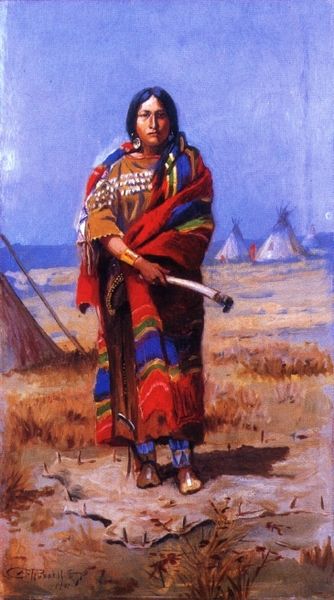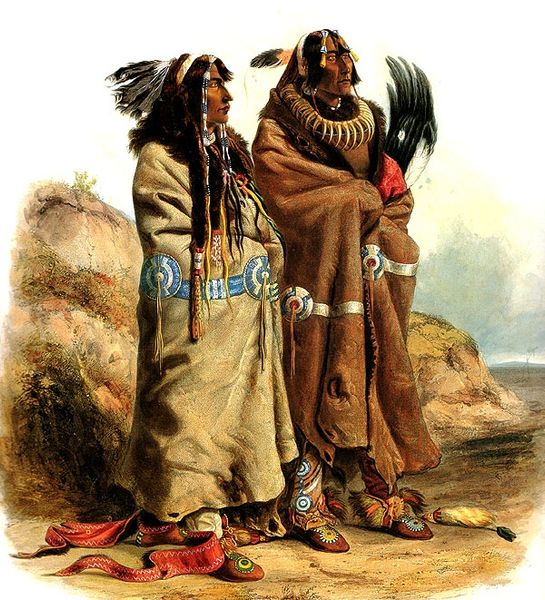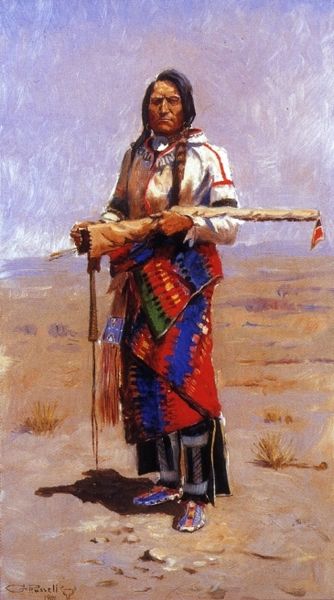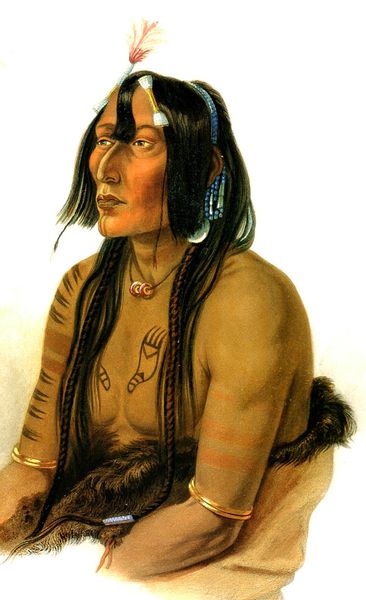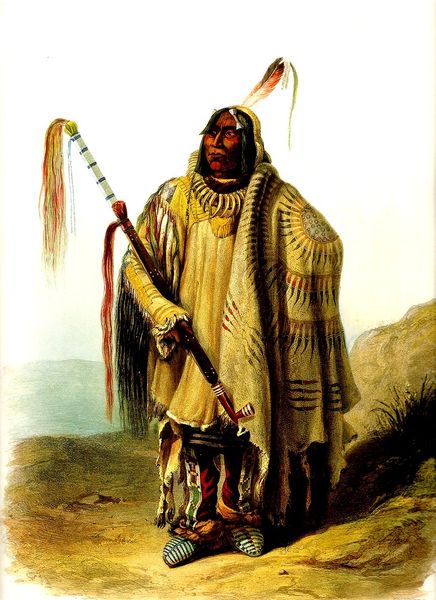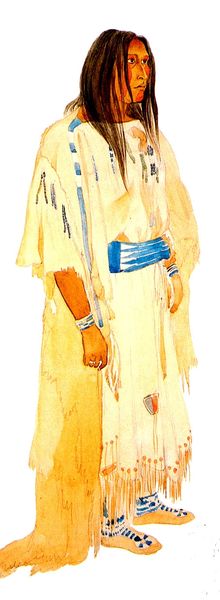
Dacota Woman and Assiniboin Girl, plate 9 from volume 2 of `Travels in the Interior of North America' 1844
0:00
0:00
karlbodmer
Private Collection
painting
#
portrait
#
painting
#
oil painting
Copyright: Public domain
Curator: Before us is Karl Bodmer's "Dacota Woman and Assiniboin Girl," created in 1844, a watercolor and oil painting currently held in a private collection. Editor: It has such a directness. They're gazing out, and the composition focuses intently on their faces and dress, creating a compelling sense of presence. There is something about their bearing—noble and yet somber—that makes this striking. Curator: Indeed. Notice the rendering of light and shadow, especially on the draped blanket. The intricate geometrical designs upon the woman's blanket are contrasted with the softer, more diffuse rendering of the landscape in the background, drawing our eyes immediately to the subjects. The painting deploys sophisticated painterly devices of chiaroscuro that render its message unambiguous. Editor: I am intrigued by the craftsmanship of the clothing: the intricate beadwork, the worked leather of the moccasins and leggings, and especially that woven blanket with its careful dyed patterns and fringes. What was involved in making it? Curator: These materials indicate particular technologies, tools, and skills from Indigenous communities. The watercolor emphasizes details, but the visible brushstrokes also contribute to its overall visual texture. And Romanticism at this period also was known for an idealisation and aestheticisation of indigenous people, right? Editor: Certainly. Beyond the mere depiction of individuals, what does their apparel communicate about the community’s value and production system? Are they utilitarian or aesthetic? We can appreciate them now aesthetically, but back then, in real terms, what were the social processes needed for these artifacts to exist? The presence of that water—a probable river in the background, hints at trade, navigation, and resource use. Curator: Agreed. Bodmer's romantic lens undoubtedly shapes our reception, yet the artwork's formal structure still serves to capture the essence and significance of these people, immortalized through line, color, and compositional balance. Editor: And immortalized through materials transformed by labour. It encourages a meditation on the intersection between art, work, representation and human interaction. Curator: Precisely. The act of studying the formal techniques, brings us to also acknowledge the circumstances under which those techniques took form and shaped the art making processes involved here.
Comments
No comments
Be the first to comment and join the conversation on the ultimate creative platform.

